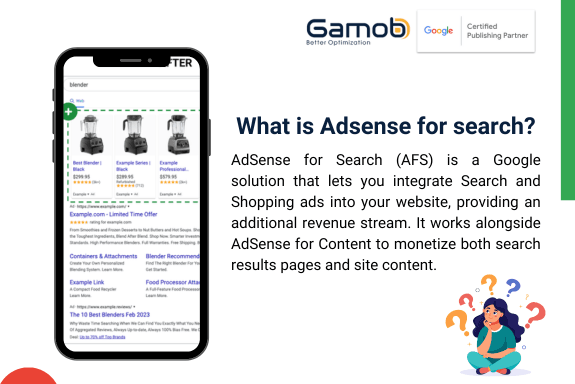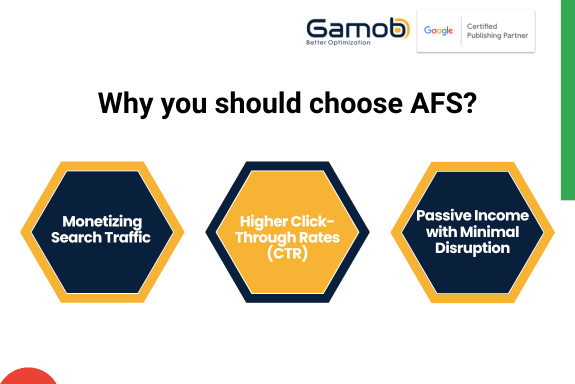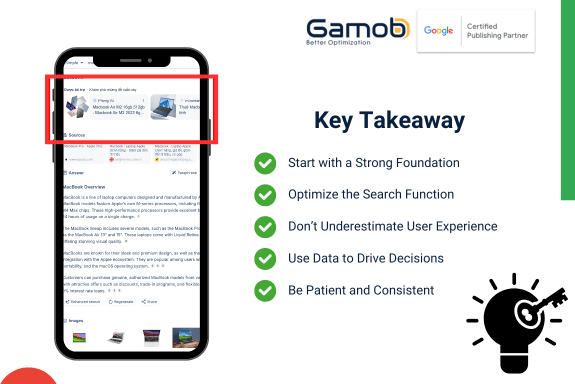Adsense For Search
The Journey of Earning More Than $10,000 as a Beginner Using Adsense for Search
Tracy Nguyen
February 24, 2025

Subscribe to receive the latest blog posts to your inbox every week.
By subscribing you agree to with our Privacy Policy.
Monetizing a website can be a challenge, especially for beginners who are just starting their journey in the world of online business. However, with the right strategies and tools, even newcomers can achieve impressive financial milestones. One such tool that has helped many website owners generate passive income is Google Adsense for Search (AFS). In this post, we’ll take you through the inspiring journey of a beginner who successfully earned over $10,000 using AFS—and how you, too, can achieve similar success.
Introducing the Story
Imagine starting a website with a goal to share your knowledge or products but struggling to figure out how to turn that passion into profit. That’s the situation many beginners face. However, through Google Adsense for Search (AFS), one beginner managed to overcome this obstacle and generate over $10,000 in ad revenue. This is a story about how the power of search traffic, when paired with AFS, can transform a website into a significant income-generating platform.
The Appeal of Adsense for Search
Why should beginners consider Adsense for Search? AFS is an attractive monetization tool for those who already have existing content and search traffic. It’s a seamless way to turn your website’s internal search bar into a revenue-generating feature without disrupting user experience. Unlike traditional display ads, AFS works by placing relevant ads within your search results, offering a unique way to capitalize on organic search behavior.
In this post, we’ll explore the journey of a beginner who successfully earned over $10,000 with AFS. From setting it up to optimizing ad placements, we’ll cover every step and key takeaway that can help you replicate their success.

The Beginnings: Why Adsense for Search?
Starting Point: The Website or Blog
The story starts with a beginner who had a decent blog but wasn’t generating significant revenue. They had a collection of well-written articles, but monetizing the traffic was a challenge. Initially, they relied on display ads and affiliate marketing, but these methods didn’t generate the revenue they hoped for. The user experience also suffered from too many disruptive ads.
The beginner knew they needed a more targeted and less intrusive way to monetize their website. They decided to try Adsense for Search (AFS), hoping it would complement their existing content and search traffic without overwhelming visitors with ads.
Why Choose Adsense for Search?
AFS was an appealing option because it allowed the beginner to monetize the search traffic on their website. Unlike display ads, which are shown on all pages, AFS targets users specifically when they perform searches on the site. This means that ads are more relevant, leading to better click-through rates (CTR) and a more natural user experience.
When compared to other monetization methods like affiliate marketing, AFS offers a passive income stream that doesn’t require constant product promotion. It also doesn’t disrupt the site’s layout, which was crucial for the beginner’s goal of maintaining a clean and user-friendly design.

Initial Steps to Setting Up AFS
Getting started with AFS was relatively simple. The first step was integrating a search box into the website, which is required for AFS to function. Setting up the Google Adsense account was another crucial step, after which the beginner linked the search box to Adsense for Search. The integration process was easy compared to other monetization strategies, and they were ready to start generating revenue.
The Learning Curve: Overcoming Challenges
Initial Struggles
Despite the simplicity of setting up AFS, the beginner faced several challenges in the early stages. One of the main struggles was ad placement. They weren’t sure where to place the ads so that they would be visible without disrupting the user experience. Additionally, understanding search behavior and how it affects ad targeting was another challenge.
At first, the ads weren’t performing as expected. The beginner wasn’t getting enough clicks, and revenue was still low. But they didn’t give up. Instead, they took the time to research and experiment with different strategies, learning from Google’s resources and other online forums.
Optimizing the Search Function
One of the most important realizations during this phase was the need for a well-functioning search tool. Before they could monetize search queries effectively, the search bar had to be easy to find and work smoothly. They made small tweaks to ensure that the search function was more efficient, which led to more frequent searches and higher-quality ad placements.
Learning About Ad Placements and User Experience
Through trial and error, the beginner figured out the optimal way to place ads. They experimented with different ad formats and placements to ensure the user experience was not compromised. Initially, they placed the ads at the top of the page, but quickly realized that placing them within the search results yielded better results.
The key to maximizing CTR was ensuring that the ads were relevant to the search queries, and placing them in spots where users were more likely to engage with them.
Tracking Results and Making Adjustments
Using Google Analytics and Adsense reports, the beginner tracked performance and made data-driven decisions. They learned to focus on key metrics like search queries, CTR, and revenue per search. This allowed them to refine their strategy and continuously improve the performance of their AFS implementation.
Breakthrough Moment: Earning the First $1,000
The First Sign of Success
The breakthrough came when the beginner earned their first $500 to $1,000. This was a pivotal moment because it showed that AFS could actually generate real revenue. The beginner began to see the power of search traffic, and how relevant ads could lead to more clicks and higher earnings.
Refining the Strategy
With the first success under their belt, the beginner refined their strategy. They experimented with different ad types—text ads vs. display ads—and made adjustments to the search box placement to improve visibility. They also worked on improving the search results page, ensuring that it was not only more functional but also more engaging for visitors.
The key insight here was that AFS wasn’t a “set and forget” tool. It required ongoing optimization, testing, and tweaks to fully maximize its potential.
Consistency is Key
Another important lesson learned during this phase was the importance of consistency. The beginner focused on delivering consistent high-quality content, which kept users coming back to the website. This steady flow of traffic translated into more search queries and, consequently, more ad revenue.
Scaling Up: From $1,000 to $10,000
Understanding What Drives Success
Once the beginner reached $1,000, they began to see patterns emerge in the search queries and ad performance. They realized that AFS was most effective when there was a consistent flow of search traffic, so they began to focus on scaling their efforts.
Maximizing Traffic to Increase Revenue
To scale, the beginner used SEO and content marketing strategies to drive more traffic to their website. They optimized existing content, created new content targeting high-traffic keywords, and worked on improving the website’s search engine ranking.
As the traffic increased, so did the number of search queries, and as a result, AFS revenue grew steadily.
Advanced Optimization
Once the beginner hit the $1,000 mark, they began experimenting with advanced optimization techniques. These included A/B testing ad formats, tweaking ad placements, and making the search bar more prominent. They also added features like search filters and auto-suggestions, which improved the quality of search results and, consequently, the relevance of ads shown.
These small changes had a significant impact on user engagement and AFS revenue. As a result, they were able to scale their earnings from $1,000 to over $10,000 in a relatively short time.
Key Takeaways: How Beginners Can Achieve Similar Success with AFS

Instead of researching and deploying AFS, you can choose Gamob as your AFS development partner. Gamob is Google Certified Publishing Partner (GCPP) that empowers over 10,000 publishers helping them deliver expert solutions in Product and User Acquisition Consultancy, Revenue & Inventory Optimization, and Inventory Quality Assurance. Our mission is to boost publishers' and ad networks' success, ensuring quality, efficiency, and sustainable growth through trusted, innovative partnerships.
---------------------
Gamob | GCPP - Empower your monetization journey
- Email: [email protected]
- Website: www.gamob.com
- Linkedin: www.linkedin.com/company/gamob-gcpp